#Modular Construction
Explore tagged Tumblr posts
Text






Opel Maxx 5 Door Concept, 1995, by Bertone. The modular aluminium space frame used by the Maxx concept could be easily adapted to a number of purposes but ultimately the costs of producing a car using the system were prohibitive. Audi never made any money out of the A2 that used a similar means of construction
#Opel#Opel Maxx#concept#prototype#aluminium spaceframe#1995#Bertone#modular construction#design study#General Motors#General Motors Europe#1990s
114 notes
·
View notes
Text



I made these patterns from "Folding Techniques for Designers"
#origami#modular construction#my own posts#modular construction design#architecture#architecture student
2 notes
·
View notes
Text
Why Acoustic Enclosures Are Essential in Modern Industry | EPACK Prefab
In busy industrial spaces, noise is more than just a background hum—it’s a serious concern. At EPACK Prefab, we’re a trusted Acoustic Enclosure Manufacturer, and we’ve seen how unchecked noise levels can affect productivity and break compliance standards. That’s why our enclosures do more than dampen sound—they support smoother operations, safer workplaces, and better outcomes.
🎧 So, What Exactly Is an Acoustic Enclosure?

An acoustic enclosure is a sound-insulated unit that wraps around noisy machinery—like generators, blowers, compressors, or pumps. It’s designed to trap sound inside and prevent it from affecting workers or the surrounding area. These enclosures are built with dense, soundproof materials and engineered so the equipment still gets proper ventilation and access for maintenance.
🔍 Why So Many Industries Depend on Them
✅ Meeting Health & Safety Guidelines Consistent exposure to high-volume noise can damage hearing and increase stress. Enclosures help businesses meet occupational health standards and reduce risks.
✅ Creating Better Workspaces Quieter environments improve concentration, comfort, and overall morale among staff.
✅ Extra Protection for Equipment These structures also act as shields—guarding machines against dust, harsh weather, and physical wear.
✅ Custom-Built for Your Needs At EPACK, we never offer one-size-fits-all. Every acoustic enclosure is crafted to match the exact equipment, usage, and decibel control you need.
🏭 Where Are Acoustic Enclosures Commonly Used?
You’ll find EPACK enclosures in all kinds of high-noise zones, including:
Power generation sites (especially DG sets)
Manufacturing units
Petrochemical and gas facilities
HVAC installations in commercial buildings
Data centers and telecom zones
If it’s loud, we help make it livable.
👷♂️ Why Work with EPACK Prefab?
With over two decades of prefab construction experience, EPACK Prefab blends technical expertise with custom manufacturing to deliver enclosures that actually work in real-world conditions. We don’t just build—we listen, measure, test, and tailor every unit to your operational reality.
💬 Let’s Turn Down the Volume Looking to bring noise under control while staying compliant? 📞 Call: +91-8130444466 🌐 Visit: www.epack.in 📩 Email: [email protected]
#Acoustic Enclosure#Noise Control#Industrial Safety#Soundproofing#EPACK Prefab#Prefab Solutions#Industrial Equipment#DG Set Enclosure#Modular Construction#Noise Pollution
0 notes
Text
#Affordable housing solutions#Housing accessibility#Modular construction#Zoning reforms#Housing costs
0 notes
Text
Best Shipping Container Houses Manufacturers
Safe Room Designs stands out among Shipping Container Houses Manufacturers, offering innovative, durable, and eco-friendly housing solutions. Our custom-built container homes are designed for comfort, security, and style. Whether for residential or commercial use, we deliver quality structures tailored to your needs.
#Shipping Container Homes#Container Houses#Container Homes Builders#Modular Container Homes#Prefab Container Homes#Steel Container Homes#Sustainable Housing#Eco-Friendly Homes#Affordable Housing#Shipping Container House Manufacturers#Container Home Suppliers#Custom Container Homes#Modified Shipping Containers#Container Conversions#Prefabricated Container Buildings#Modular Construction#Steel Building Manufacturers#Container Architecture#Small Container Homes
1 note
·
View note
Text
Effortless Expansion with Modular Construction: Build Anywhere with Nest-In

Build your business effortlessly across multiple locations with Nest-In’s modular construction solutions. Designed for speed and flexibility, our high-quality, customisable structures cater to your unique business needs. With quick setup and long-lasting durability, you can establish a presence in new locations without compromising on quality.
Establish your business with ease—wherever you need it. Tap on the link in our bio to know more or connect with our Nest-In executives at 📞 1800 208 8200.
0 notes
Text
The Advantages of Modular Construction Over Traditional Building Methods
Modular construction is transforming the way buildings are designed and assembled. A modular building manufacturer produces prefabricated sections in a controlled environment, ensuring quality control and faster construction timelines.
Unlike conventional methods, modular buildings are more sustainable, reducing material waste and energy consumption. They also offer flexibility, allowing for easy expansion and relocation. Businesses, educational institutions, and healthcare facilities benefit from modular buildings due to their cost-efficiency and durability.
Choosing a manufacturer with experience in modular technology ensures seamless project execution, from design to installation, making it a superior alternative to traditional construction.
0 notes
Text
#Mass Production#Modular Construction#modular & versatile fast track construction#Construction#Construction service#contracting companies#Contracting Company#dubai#dubai production company#ksa#uae
0 notes
Text
Affordable Housing Fix: Living on Top of a Costco
The U.S. housing crisis has long demanded innovative solutions, and Thrive Living is stepping up with a bold new model. By blending affordable housing with retail, their upcoming Los Angeles development in Baldwin Village offers a potential blueprint for addressing housing shortages in urban markets. This $425 million project will house 800 residential units—184 of which will be designated as…

View On WordPress
#affordable housing#architecture#build to rent#California#Daniel Kaufman Real Estate#Housing Market#investing#Los Angeles#modular construction#Real Estate#real estate investing#rental market#technology
0 notes
Text
More Future Arenas of Competition – Asrar Qureshi’s Blog Post #1044
#Arenas#Asrar Qureshi#Autonomous Vehicles#Batteries#Blogpost1044#Cybersecurity#Digital Communication#Electric Cars#Modular Construction#Pharma Veterans#Semiconductors#Space#Video Games
0 notes
Text
youtube
#modular construction#aluminum framing#MHS building systems#sustainable building#prefab modules#energy efficiency#construction innovation#building design#cost savings#environmental impact#Tim Siahatgar#MHS#mhsprefab#award winning#awards#production#construction#modular homes#Youtube
1 note
·
View note
Text
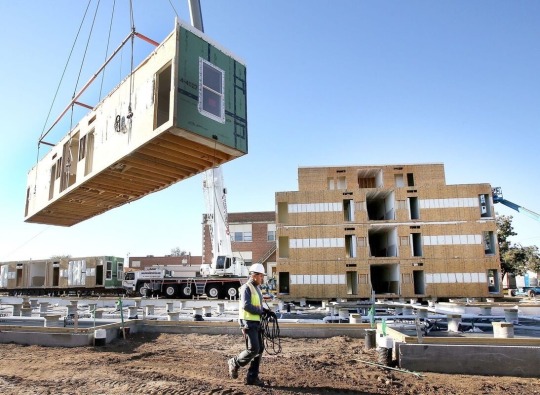
Prefab Goes Prime Time: Greystar’s First Modular Apartment Complex Signals a Housing Shift
A Bold Step in Modular Living
America’s largest apartment developer, Greystar Real Estate Partners, has made a bold entrance into modular construction. The company unveiled its first modular apartment complex near Pittsburgh, a significant move that reflects the growing appeal of prefabricated housing. Unlike traditional homes built on-site, modular units are constructed in factories and then assembled on location. While prefab homes have long been associated with affordable housing, Greystar is redefining the space with high-end amenities like gyms, pools, amphitheaters, and bocce courts.
Why Modular?
Greystar’s modular experiment isn’t just about innovation—it’s about efficiency and impact.
• Speed: Modular construction allowed Greystar to complete the project 40% faster than traditional methods.
• Labor Savings: The approach required only one-third of the typical workforce.
• Sustainability: With 90% less waste produced, the project underscores the environmental benefits of modular design.
• Cost: The development was 10% cheaper than comparable traditional multifamily projects.
A Growing Trend
Greystar’s move highlights a broader shift in the housing market. With soaring home prices and a persistent shortage of affordable housing, modular homes are gaining momentum. Other major players are jumping on the prefab bandwagon:
• Walmart launched expandable steel tiny homes for $16,000.
• Home Depot and Amazon offer mini homes for consumers looking to downsize or add backyard units.
• Airbnb’s co-founder introduced an accessory dwelling unit (ADU) business during the pandemic, catering to homeowners who want additional rental income or flexible living space.
Old methods are solving new challenges. Modular homes currently make up less than 4% of the real estate market, but their popularity is growing. Builders are embracing the approach to meet housing demand, while consumers are drawn to its accessibility and faster turnaround times. Experts say modular units can be move-in ready in less than a year—far quicker than traditional construction timelines.
With Greystar leading the charge, modular housing could become a key solution to the affordability and sustainability challenges reshaping the real estate landscape. Is your next project ready to go modular? Let’s discuss!
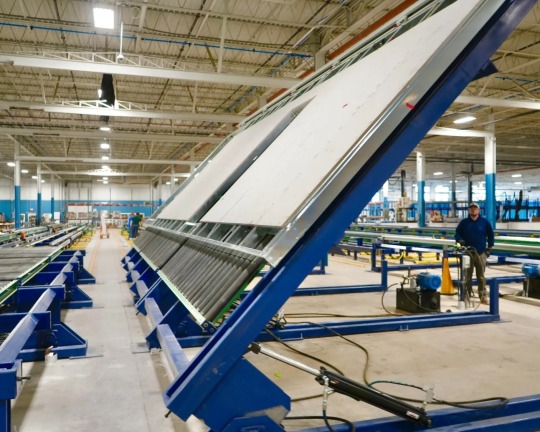
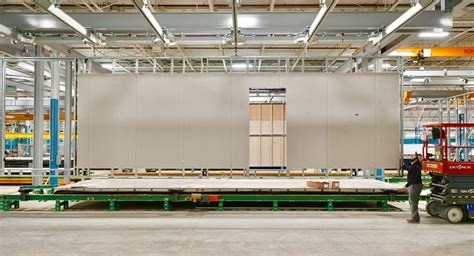
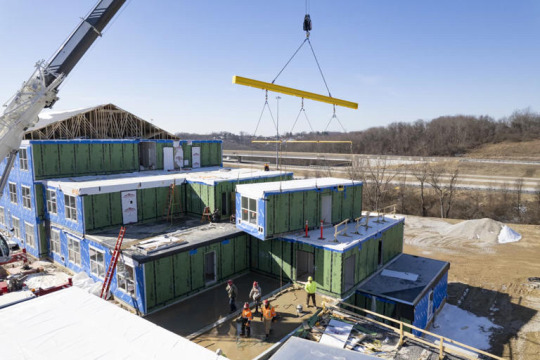
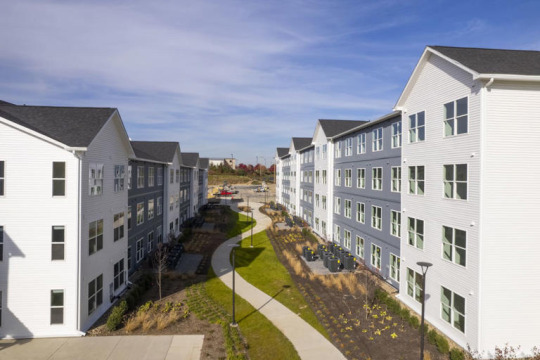
#modular construction#real estate#techinnovation#technology#tech#architecture#prefab houses#home builders#construction#investment#danielkaufmanrealestate#economy#real estate investing#daniel kaufman#housing#homes
1 note
·
View note
Text
Boost Efficiency with Modular Construction & Contractor Software for Small Businesses

Modular construction is making big waves in the marketplace today, focusing on faster work and being good for the environment. With tools like contractor software for small business, contractors can streamline project management, from design through to assembly, ensuring a smooth and efficient process. In this process, the "blocks" or "modules" of a structure are made in a separate place and then brought to the project site for assembly. Modular construction is not a passing trend but a significant shift in building design, production, and assembly. This method allows for quicker project timelines, reduced waste, and lower costs. Thus, it is a key player in the construction industry's future.
Let dives in to see how modular construction is racing forward and turning construction greener than traditional methods.
What is Modular Construction?
Modular construction consists of building the individual modules in a factory environment before taking them onto the site for assembly. These modules can vary in size and scope from whole rooms to structural components, all manufactured to exact specifications.
The high quality is ensured because each module is produced under optimum conditions, away from weather conditions that might affect on-site construction. Therefore, the process will be smooth, construction time will be reduced, and there will be minimum disruptions on the site.
Key Benefits of Modular Construction
Speed of Construction
What sets modular construction apart is that projects can be completed much faster than conventional methods. As the modules are produced in a factory, prep work and foundation tasks, onsite can happen at the same time. This concurrent action can reduce construction timelines by up to 50%, making it highly suitable for those projects needing to meet a deadline. With quick construction, buildings like homes, offices, and health centers get up and running faster.
Enhanced Sustainability
Many people in the industry praise modular construction as green-friendly and environmentally performance-oriented. In factories, construction materials are managed more efficiently, cutting down waste by as much as 90% compared to traditional construction methods. Also, off-site construction creates disturbances that help keep dust, noise, and emissions low during the building process. Eco-friendly materials and energy-efficient designs are also key features for many modular construction companies that contribute to green building movements.
Enhanced quality control
In the controlled environment of modular construction, top-notch quality is guaranteed. The steady production setting enables us to uphold precise specifications, reducing blunders efficiently on-site. The quality of finishes and structures would be higher, achieving or surpassing the standards set by building codes. By condensing the timeline, costly corrections are reduced, decreasing delays and overhead for developers and contractors.
Cost-Effectiveness
Modular construction is like a money-saving machine because it's fast, efficient, and less costly. Developers save money with projects finishing sooner, which means less time is spent paying for temporary accommodation, renting the site, and other logistics. The advantages do not stop there but also extend to fewer on-site workers, which addresses the labor shortage again and cuts down on costs.
Modular Construction’s Role in Addressing Housing Shortages
Many places around the world are facing a housing shortage as a rising issue. The housing shortage can be covered by modular construction, a quick and low-cost way to create homes. Both government officials and builders are contemplating over this technique. It's not just affordable but also swift without dipping in craftsmanship. Addressing space scarcity in crowded cities, these units are a boon to those who need to construct multi-story buildings within a minimum period.
In cities where the supply of housing falls far short of demand, such as New York, London, and San Francisco, modular apartment and micro-house complexes have favoured a change. This modular method can accelerate the delivery of highly demanded apartment projects, which reduces the time spent on construction activities.
The Environmental Impact of Modular Construction
Sustainability in the modern construction industry is no longer a buzzword, but a demand. Modular construction helps meet this need by cutting down waste and saving resources.
Here's how:
Minimized Waste: Conventional processes of construction lead to immense material waste due to inaccuracies and site adjustments. With modular construction, though, you get effective resource control. This comes from exact manufacturing methods that generate very little wood, steel, and concrete waste.
Less Emission in Transport: Transporting modules to the construction site might seem counterintuitive, but it actually reduces carbon footprints. Fewer deliveries and less construction on-site mean less pollution. Compared to regular construction methods, this approach keeps emissions low. Plus, the ability to assemble more modules means fewer and lighter trips and fuel consumption, making it all surprisingly eco-friendly!
Energy-Efficient Design: Energy efficiency is one of the leading design considerations for many modular buildings, with advanced insulation materials and the latest modern HVAC systems to reduce energy consumption. The factory-controlled environment realizes this with precise installation, improving the overall energy efficiency of the final structure.
Challenges in Adopting Modular Construction
Though modular construction presents several advantages, it isn't without its obstacles. Understanding these is essential to tapping into its maximum potential:
Initial Investment and Financing
Building in 3D, or volumetric modular construction, can be quite expensive due to the higher upfront investment required for appropriate factories and equipment, although it can be cost-effective over a very long period. Financing modular projects can also be more complicated than usual since many lenders do not know about this construction. This barrier is falling down as the industry develops and more and more financial institutions realize its advantages.
Perception and Acceptance
There is a general misunderstanding among many that modular buildings are inferior to those developed conventionally. The reverse is confirmed, with technological advancements and design enabling modular buildings to match the quality, durability, and aesthetic appeals of site-built ones. If wider acceptance is to be obtained, education regarding developers, architects, and the masses on the benefits and possibilities of modular construction is of much essence.
Logistics and Transport
Getting big modules to a construction site can lead to huge challenges, especially if the streets are narrow in city areas or the place is very far out. Transporting and setting up on-site needs careful planning and teamwork to work right. Even though this sounds tough, putting everything together at the site is usually fast and efficient, which makes up for these drawbacks.
The Future of Modular Construction: Trends to Watch
A brighter prospect is in store for modular construction, as continuous technological advancement has been driving speed, quality, and sustainability improvements.
Here are some emerging trends that could redefine this pioneering way of building.
Integration of AI and Automation
In modular factories, AI and automation can enhance production lines, cut down on worker costs, and fast-track module manufacturing. With these improvements, it would be possible to boost the scalability and precision. This makes meeting high-quality modular structure demands easier.
Adoption into Commercial and Industrial Sectors
While traditionally associated with residential projects, modular construction is finding its place in commercial and industrial construction. With modular building methods, it can mean that hospitals, schools, and offices can open their doors more quickly, serving their communities.
Sustainability as a Standard
Consequently, with more green building certifications targeted for construction projects, the potential of modular construction for energy-efficient and low-waste structures will be in demand. Expect more LEED-certified modular buildings that would push the industry towards more green ways.
Why Modular Construction is Here to Stay
This is a modular construction paradigm shift in how we build. It's set to take a top spot in reshaping the industry. This new approach lets us build faster, greener, and cheaper. Builders, contractors, and investors want a new, all-in-one way to build. Modular methods give them that.
This innovative approach allows developers and builders to build faster, greener, and more cost-effective structures.
0 notes
Text
Hexacube module (in foreground), France, 1972.
Architects: Georges Candilis, Anja Blomstedt

540 notes
·
View notes
Video
youtube
Safe and Secure Structures with the Innova Panel. The InnovaPanel offers superior fire resistance to most common building materials. Our magnesium cement insulated panels are hurricane-rated +200 mph and load-bearing up to 5 floors. Build the Building of the Future Today with the InnovaPanel.
#youtube#fire#ecofriendly#sustainableconstruction#energy efficient home#hurricane#buildwithsips#sipsbuildbetter#panelized#modular construction#modluar
0 notes
Text
Experience Efficiency with Florida's Custom Modular Home Builders
Discover how Florida's custom modular home builders, like Lynn Modular, are revolutionizing the construction industry with their innovative methods. The blog highlights the advantages of modular construction, including speed, cost savings, quality control, and environmental benefits. Modular homes are built in climate-controlled environments, ensuring precision and reducing waste. Customization options allow homeowners to create personalized living spaces. Embrace the future of home building with durable, efficient, and eco-friendly modular homes.
0 notes